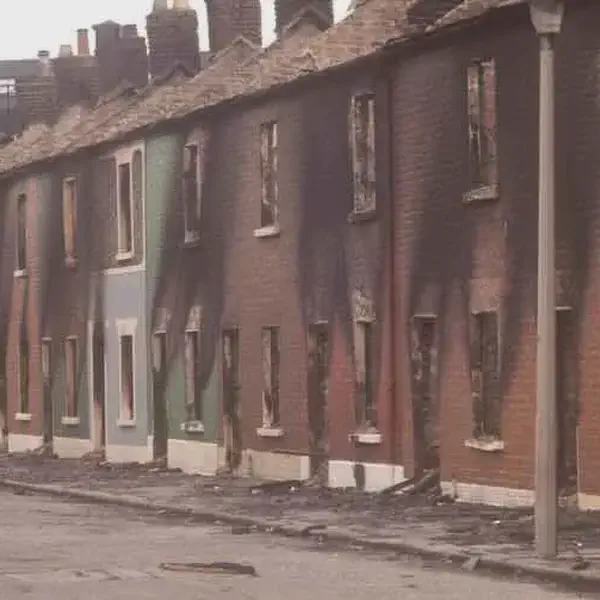
Belfast Bloody Sunday, 1921
July 10, 1921
Bloody Sunday or Belfast’s Bloody Sunday was a day of violence in Belfast, Northern Ireland on 10 July 1921, during the Irish War of Independence.
The violence erupted one day before a truce began, which ended the war in most of Ireland.
With the truce nearing, police launched a raid against republicans, but were ambushed by the Irish Republican Army (IRA) and an officer was killed.
In retaliation, Protestant loyalists attacked Catholic enclaves in west Belfast, burning homes and businesses. This sparked rioting and gun battles between Protestants and Catholics, including paramilitaries.
There were also gun battles between republicans/nationalists and the police, and some police patrols fired indiscriminately at Catholic civilians.
Seventeen people were killed or fatally wounded on 10 July, and a further three were killed or fatally wounded before the Truce:
Truce
July–December 1921 began at noon on 11 July.
At least 100 people were wounded.
About 200 houses were destroyed or badly damaged, most of them Catholic homes, leaving 1,000 people homeless.
Aftermath
A strict curfew was enforced in Belfast after the violence. On 11 July, the Commandant of the IRA’s 2nd Northern Division, Eoin O’Duffy, was sent to Belfast by the organization’s leadership in Dublin to liaise with the British authorities there and try to maintain the truce. He said, “I found the city in a veritable state of war.
The peal of rifles could be heard on all sides, frenzied mobs at every street corner, terror-stricken people rushing for their lives, and ambulances carrying the dead and dying to hospitals.”
There were no serious disturbances during the Orange Order’s yearly 12 July marches, but sporadic violence resumed the following day, and by the end of the week 28 people had been killed or fatally wounded in Belfast.
O’Duffy set up headquarters in St Mary’s Hall in Belfast city centre and made contact with British forces and the press. With the tacit consent of the RIC, he organized IRA patrols in Catholic areas to try to restore order and announced that IRA action would cease except in self-defence.
Both Protestants and Catholics saw the truce as a victory for republicans. Protestant unionists “were particularly appalled by the sight of policemen and soldiers meeting IRA officers on a semi-official basis”.
While the truce ended fighting in most of Ireland, communal violence soon resumed in Belfast.
IRA members later recalled, “The Truce was not observed by either side in the north”, while McCorley said the truce in Belfast “lasted six hours only”.
The violence of the period in Belfast was cyclical, and the events of July 1921 were followed by a lull until a three-day period starting on 29 August, when another 20 lives were lost in the west and north of the city.